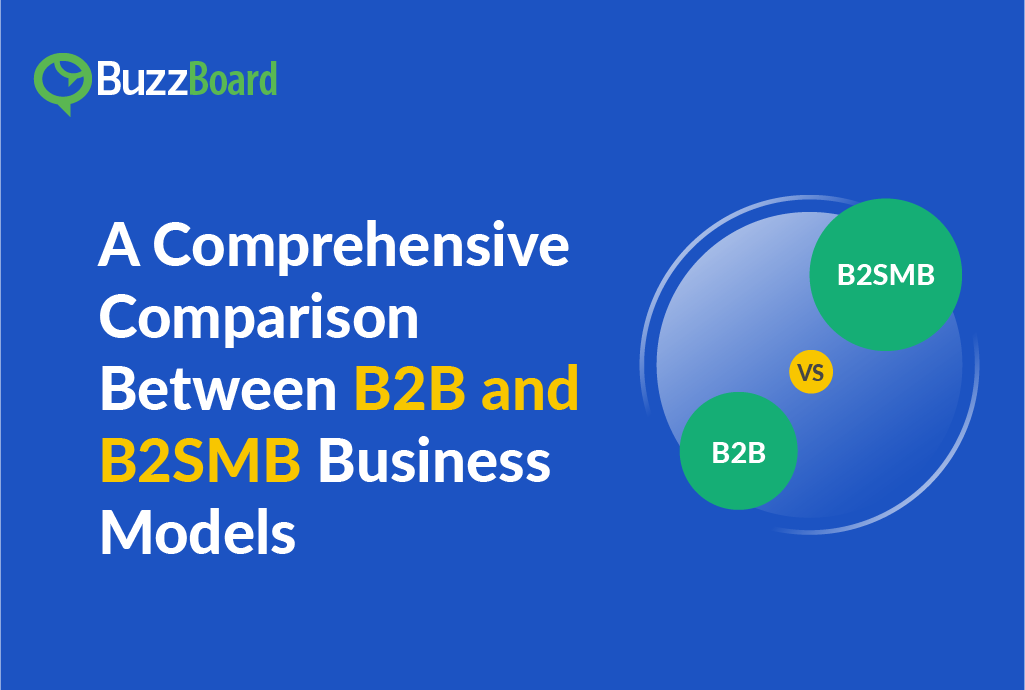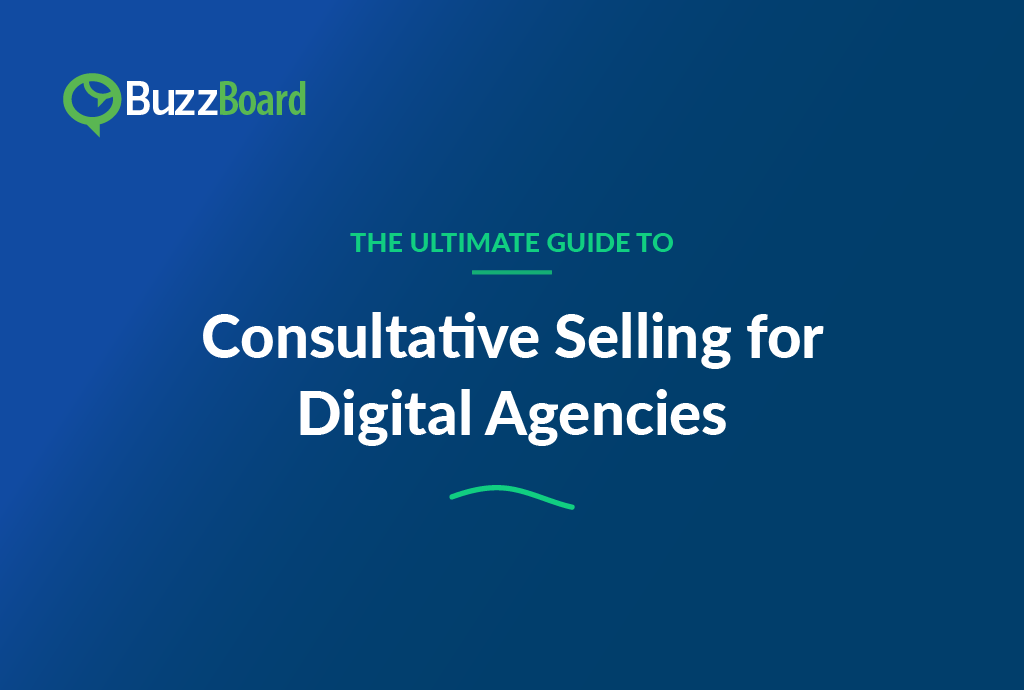The two distinct realms of B2B and B2SMB stand out as pillars of commerce. Despite sharing a fundamental purpose of facilitating business transactions, they are divergent universes in the way they engage, cater to, and ultimately transform the entities they serve.
B2B, or business-to-business, typically targets larger enterprises, including multinational corporations, that require substantial volumes of products or services. On the other hand, B2SMB, or business-to-small-and-medium-business focuses on the unique needs of small and medium-sized businesses that may require simple, point solutions to address their specific challenges.
But that’s pretty basic. The vast business world has its ways of fine-tuning the differences based on more crucial factors, and they are a prerequisite to learn and embed into your day-to-day operations for making more informed decisions and reaching out to the target audience with enhanced relevancy.
Your first step to truly grasping the nuances and implications of these two divergent business models begins by understanding them individually.
What Is B2B?
B2B, or business-to-business, refers to transactions conducted between two or more companies. In a B2B relationship, products or services are sold from one business to another, rather than directly to individual consumers. This type of interaction typically occurs when one company provides the necessary inputs, materials, or services to support another company’s operations.
Within the B2B landscape, there are various types of transactions that take place. For example, a manufacturer might sell raw materials to another manufacturer, who then uses those materials to produce finished goods. Additionally, B2B transactions can involve the exchange of services, such as a marketing agency providing advertising services to a software company.
One of the key advantages of B2B transactions is the potential for long-term partnerships. When companies engage in B2B relationships, they often establish mutually beneficial agreements that can span years or even decades. This allows both parties to develop a deep understanding of each other’s needs and work together to achieve shared goals.
What Is B2SMB?
B2SMB, or business-to-small and medium-sized businesses, focuses specifically on catering to the needs of small and medium-sized enterprises (SMEs). These are companies that have a limited number of employees and operate within a defined market segment. B2SMB strategies aim to address the unique challenges and requirements of SMEs, who make up a significant portion of the overall business landscape.
Small and medium-sized businesses play a vital role in the economy, driving innovation, creating jobs, and contributing to economic growth. However, these businesses often face distinct challenges that differ from larger corporations. Limited resources, budget constraints, and a need for specialized solutions are just a few examples of the hurdles that SMEs encounter.
When implementing B2SMB strategies, companies must tailor their approach to meet the specific needs of SMEs. This may involve offering affordable pricing options, providing personalized support, or developing products and services that are specifically designed for the unique requirements of smaller businesses.
Key Differences Between B2B and B2SMB
Apart from the target market size and growth potential of each segment, B2B and B2SMB business models stand apart from each other in various, distinct ways. Their in-between differences have far-reaching reverberations on businesses, entrepreneurs, marketers, and policymakers alike.
1. Complexity vs. Simplicity: B2B transactions are often intricate, involving multiple stakeholders and intricate procurement procedures. Transactions here often involve high-value contracts, lengthy sales cycles, and twisted negotiations. In contrast, B2SMB deals tend to be simpler and involve fewer decision-makers. The scale here is modest, but the sheer volume is immense, making it a dynamic and challenging market to navigate.
2. Product and Service Offerings: B2B offerings may require high customization and advanced features, while B2SMB customers typically seek standardized products that are easy to use and cost-effective. Mass customization is challenging in this segment, as it needs to cater to the diverse needs of a broad audience.
3. Sales Cycles: The sales cycle in B2Bs can be long and involve rigorous negotiations, as they count on relationship-building, industry events, and a consultative sales approach. But B2SMB sales cycles pulsate with a unique energy, defined by agility and immediacy. Here, transactions move at a brisk pace, often guided by the entrepreneurial spirit that characterizes small and medium-sized businesses.
4. Decision-Making Processes: This is often a labyrinthine process in B2B scenarios, requiring the consensus of multiple stakeholders. High-level executives, procurement teams, and department heads are involved, leading to intricate procurement procedures and due diligence. In contrast, B2SMB decisions are often made by a handful of key individuals, including business owners and managers. The process is streamlined, with fewer layers of bureaucracy, making it quicker and more straightforward.
5. Pricing Models: When it comes to pricing, B2B organizations typically engage in negotiated pricing and long-term contracts with their clients. These agreements often involve volume discounts, value-based pricing, and tailored pricing structures. In the B2SMB realm, simpler pricing structures are more common, focusing on competitive pricing and clear value propositions to attract SMEs.
6. Customer Support: B2B organizations focus on treating their high-value clients as strategic partners. That’s why they invest in dedicated account managers who work closely with their clients to identify opportunities for growth, address challenges, and ensure their satisfaction.
In the B2SMB sphere, customer relationship management centers around fostering loyalty and delivering exceptional experiences to a broader customer base. B2SMBs prioritize building strong communities and networks of SMB customers so that SMBs can benefit from connecting with peers, sharing best practices, and accessing additional resources. Therefore, B2SMB organizations often organize events, webinars, and online forums where SMBs can interact, learn from each other, and build valuable relationships.
7. Marketing Channels: The audience in B2B marketing typically comprises decision-makers, procurement professionals, and various departments within larger corporations. Hence, their methods often rely on a mix of direct sales teams, targeted campaigns, and partnerships to reach corporate clients.
B2SMB marketing relies heavily on online channels, social media, and e-commerce platforms to reach and engage with their target audience. They recognize the importance of establishing a strong online presence and providing valuable content that educates and empowers SMBs, positioning themselves as trusted advisors and partners.
8. Risk Profiles: B2B transactions may entail higher financial and legal risks, while B2SMB transactions typically involve lower risks but require strategies for handling volume efficiently.
We’ve traversed the vast landscapes of B2B and B2SMB, discovering that while they share common ground in the realm of commerce, their differences are as profound as they are transformative. While B2B grapples with the complexities of global transactions and complex supply chains, B2SMB thrives on the nimbleness of decision-making and the ability to cater to the multifaceted needs of smaller enterprises. To master this duality is to grasp the essence of modern business—a multifaceted, immensely rewarding journey.








